
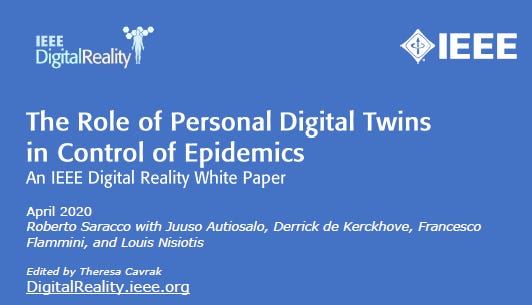
The Role of Digital Twin in Healthcare
This white paper really caught my eye. The Smart Phone is integral to the development and enforcement of the Digital Twin. IEEE discusses it for health prevention purposes, however, we know that the same technology can be used for tracking purposes and other weaponized applications. Please note the massive amounts of sensors that are on Smartphones for surveillance. I had written about the fact that I got rid of mine and had my environment screened for any possibility for weaponizable antennas. Lessons In Cybersecurity And Electromagnetic Radiation Mitigation – Or How We Are Surrounded By Weapons Systems. I have had a marked improvement in my health and energy since then.
Here is the above white paper. Please note the IEEE encourages its members to have the association create their digital twin. This is to allow the AI digital twin do research on behalf of the physical self that then can be downloaded to the physical twin to be able to have a knowledge advancement. This implies that WBAN digital twin has the capacity to neurologically enhance humans. Please listen to his lecture describing this here: The Role of Digital Twins in the digital transformation
Please note this passage of the Cyborg 2050 military paper I had written about in May. It is the health care system that will make the development of Cyborgs palatable to the public – uploading your digital twin in the metaverse for augemented reality is exactly that:
Cyborg Soldier 2050: Human/Machine Fusion and the Implications for the Future of the DOD
The global healthcare market will fuel human/machine enhancement technologies primarily to augment the loss of functionality from injury or disease, and defense applications will likely not drive the market in its later stages. The BHPC study group anticipated that the gradual introduction of beneficial restorative cyborg technologies will, to an extent, acclimatize the population to their use.
Please note they themselves know this technology can be abused by totalitarian systems:
Here are parts of the above named paper:
Social networks can indeed be used as sensors but their sensitivity and in particular their resolution is not optimal. This is where personal digital twins (PDT) may play a role. A PDT is a representation of various aspects of a person that might include the movement of the person, the interactions that person has in physical space with other people, and her health status (like presence of fever or coughing). These data can be accrued by the PDT using a few sensors already available: position and movement can easily be monitored by extracting data from her smartphone and health status can be monitored through wearable sensors, such as smartwatches measuring body temperature, heart rate, and other health markers.
Personal Digital Twins
1. All PDTs are informed (prescriptive analytics) by the health institution of the need to report specific conditions, like presence of fever above 37.5 C, increased heartrate, and shortness of breath at rest as possible indicators of infection;
2. The health institution acquires the data by all PDTs and activates global analytics taking into account the location and the emergence of patterns. Based on this it signals to those PDTs presenting a suspicious pattern or with high probability of having suffered an exposure to request their physical twin (the person) to undergo a test;
3. The test result becomes both the trigger for action (quarantine) and a situational update that may lead to an updated reporting request and analytics to all PDTs affected;
4. In case of positivity the PDT is asked to report the history of contacts and movements of its physical twin;
5. Each PDT acquires an environmental awareness, dynamically updated both from the healthcare institution and through continuous communications to PDTs of nearby physical twins. This can result in warning signs like “DO NOT APPROACH/GET CLOSE” that can be generated in case of potential risk.
The advantages of the PDT approach are:
Self generation of red flags, alerting the person of a possible critical situation;
Extensive community and nationwide analytics with the possibility of detecting weak links, thus anticipating any significant spread;
Lower cost;
Increased focus, leading to less restrictions where there is very low risk and enforcement of stronger restrictions where risk is higher;
Dynamic, just-in-time reactions to emerging situations;
Increased personal awareness thus stimulating appropriate behavior.
It should also be noted that a PDT might be hijacked by the healthcare institution/government transforming it into a police enforcement agent. Any deviation of behavior by the physical twin from one instructed to the PDT can be immediately reported to the authority. This is clearly in the Orwell path and may raise more than one brow.
Smartphones have been used in China to trace movements, and an app was deployed in Wuhan to let people know if a person at high risk of being infected was getting close (in this case the smartphones in the vicinity started to ring). There are a number of initiatives, and more are likely to develop under the pressure of this ongoing epidemic, to develop apps that can track and create awareness, like CoEpi. The challenge is to balance societal benefits/needs with personal privacy and to be able to create an awareness that does not result in fear. All in all, it is a matter of creating trust.
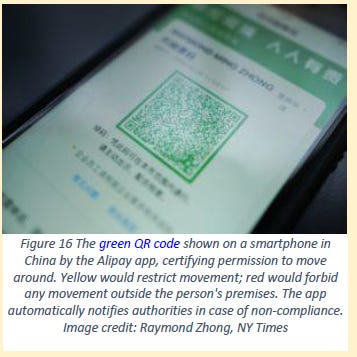
Although current technology is not perfect it is sufficient to pursue a PDT based approach to epidemic management. Research will surely make better technology available with this decade but what is really needed is a regulatory framework supporting it. The use of data from smartphones, credit card transactions, and security cameras should not be seen as a temporary measure that can be taken just by releasing privacy rights. Rather it should be a starting point that has to lead to a framework where data accessibility and privacy are both valued. A first shell of PDT can be embedded in all smartphone as part of the OS, but data shall be managed not by the OS providers but by apps in the smartphone under the control of the smartphone owner. A back up copy of the PDT shall reside in the cloud, by a trusty provider, but the access to data shall be under the control of the data owner. Policy/authority may impose the (temporary) disclosure of data to specific authorized parties (like healthcare institutions or police), and these will need to be responsible on the use of such data and derived information. Each person should have the option to opt out, i.e., do not allow the access to his data but this can be open to prosecution by authority. It is like today where we are free to buy a Lamborghini, potentially pushing it to 300kmh but at the same time we can be prosecuted for doing that. This scheme may be thwarted in an authoritarian political framework leading to a Big Brother situation, however this should not be a reason to not foster a PDT approach since there are Big Brother regimes even without PDTs.
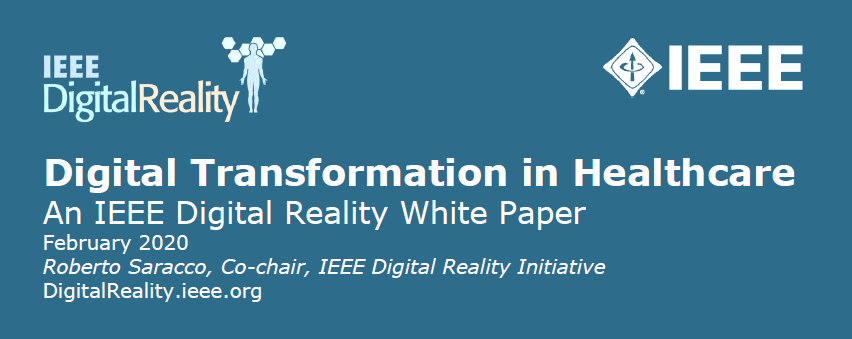
Digital Transformation In Healthcare
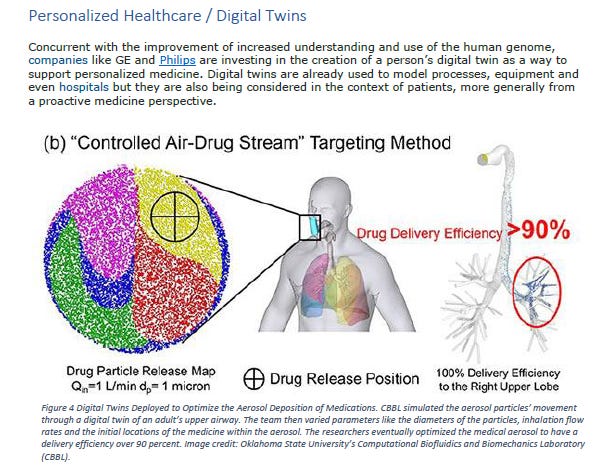
Augmented Reality in the Operating Room
Augmented reality is slowly, but definitely, entering the operating rooms in many hospitals around the world to help the surgeons and the operating team. Surgeons have used Google Glass (you can find a comprehensive review of their use here) and as technology evolves, both in terms of devices and software, additional applications are being developed.
Philips, a major player in the provisioning of advanced equipment in operating rooms, has teamed up with Microsoft to use their HoloLens 2 technology to assist and actually augment surgeons in the OR. HoloLens 2 supports multiple interactions, gesture recognition, voice control, and eye tracking, thus letting the surgeons’ hands free. Interestingly, HoloLens 2 software supports cooperation among the surgical team by letting each team member see the same image. Actually, the team members can choose to see exactly the same image or different images of the same object from different points of view. When delivering information (data) it makes sense to present the same view to all members of the team but when layering images, like blood vessels, it makes much more sense to present each person with a view that is linked to that person’s position. This requires intense software and sensors to determine the exact position of each person.
AI in Healthcare
There is basically no segment in the healthcare area where AI is not expected to play a role, from genome sequencing to drug creation, from diagnosis to surgery, from patient care in hospitals to home care.
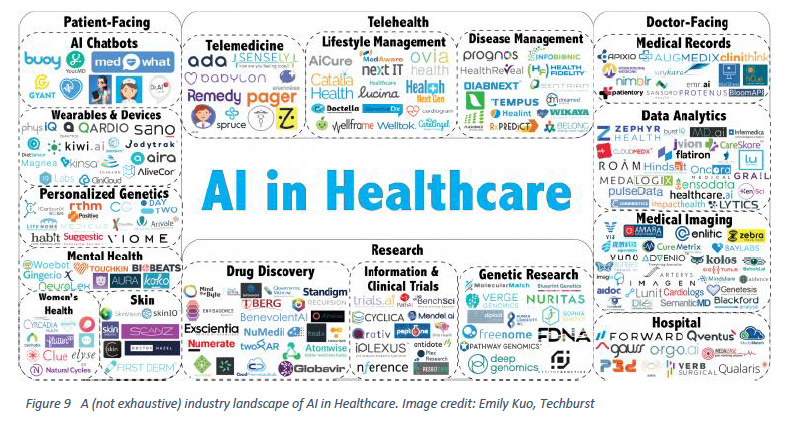
Summary:
Recent advances in using the digital twin in healthcare poses many questions regarding security risks and surveillance concerns.
The Smart Phone is central to this WBAN surveillance grid. Considering discarding one’s smartphone could be entertained for those who do not wish to have their digital twin developed in the metaverse. Getting a phone with a removable battery and no 5G capability should be considered, since all sensors are bidirectionally accessible and hence remotely controllable, even in the off position. The emergence of Artificial Intelligence in healthcare poses many risks, given that genetic research and subsequent gene modifications, extensive data analytics of every aspect of the medical record for augmented reality, mixed reality and metaverse upload all builds the data for the digital twin, which is capable of modifying the physical person via the WBAN nanosensor network and the smart phone.
I have extensively explained that the WEF goal by Juval Harrari, “to make the soul and the spirit a thing of the past” is related to exactly this technology. Once you allow your physical self and thought processes to be modified even more then they are now, people become automatons, directed via their artificial intelligence counterpart that is altered artificially by AI. That modifies your own soul. If you do not think that is possible, please read what the CIA/ DARPA developer of the AI surveillance software says about this:
This technology advancement is sold to you “for your own comfort and good.”
Your smart phone is a weaponized surveillance tool interfacing with the self assembly nanotechnology in the C19 bioweapons and inhaled smart dust via geoengineering.
The “devil” is an artificial intelligence quantum computer.
Literally.


